Question
Who among the following person sits opposite to
H? Study the following information carefully and answer the below questions Eight persons- A, B, C, D, E, F, G, and H are sitting on the circular table facing the center. They like different colour- Red, Yellow Blue , Green, Black, White, Orange, and Brown but not necessarily in the same order. The consecutive alphabetically named persons are not sitting together. C sits second to the left of the one who likes Blue colour. Two persons sit between C and H. B sits second to the left of D. G sits immediate left of the one who likes Black. Neither C nor D like Black. G and D are not immediate neighbors. G does not sit opposite to D. The number of persons sit between E and A is the same as the number of persons sit between F and the one who likes Brown when counted from the right of both A and F. F sits opposite to the one who likes Orange. Neither G nor H like Orange. The one who likes White sits second to the right of the one who likes Red. D does not like Red. F does not like Yellow colour.Solution
We have, C sits second to the left of the one who likes Blue colour. Two persons sit between C and H. From the above condition, there are two possibilities. 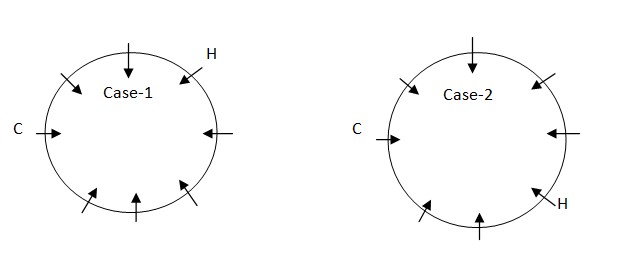 Again we have, B sits second to the left of D. From the above condition and note, there are four possibilities.
Again we have, B sits second to the left of D. From the above condition and note, there are four possibilities. 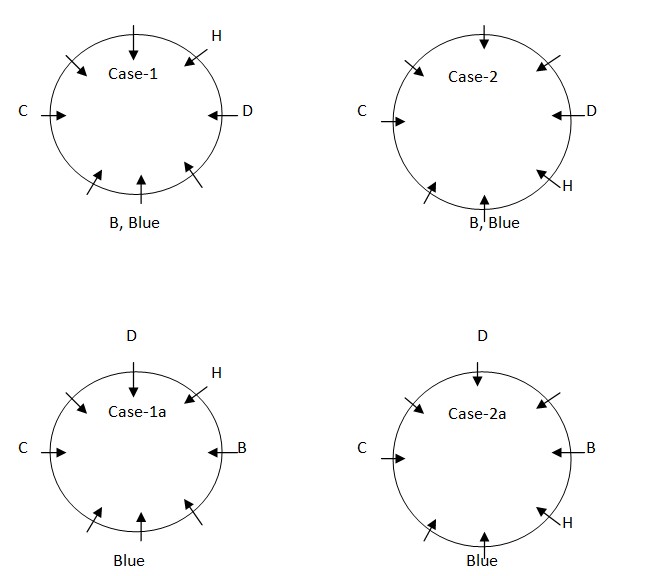 Again we have, G sits immediate left of the one who likes Black. Neither C nor D like Black. G and D are not immediate neighbors. G does not sit opposite to D. From the above condition, Case1 and case2a get eliminated because there is no possibility to place G.
Again we have, G sits immediate left of the one who likes Black. Neither C nor D like Black. G and D are not immediate neighbors. G does not sit opposite to D. From the above condition, Case1 and case2a get eliminated because there is no possibility to place G. 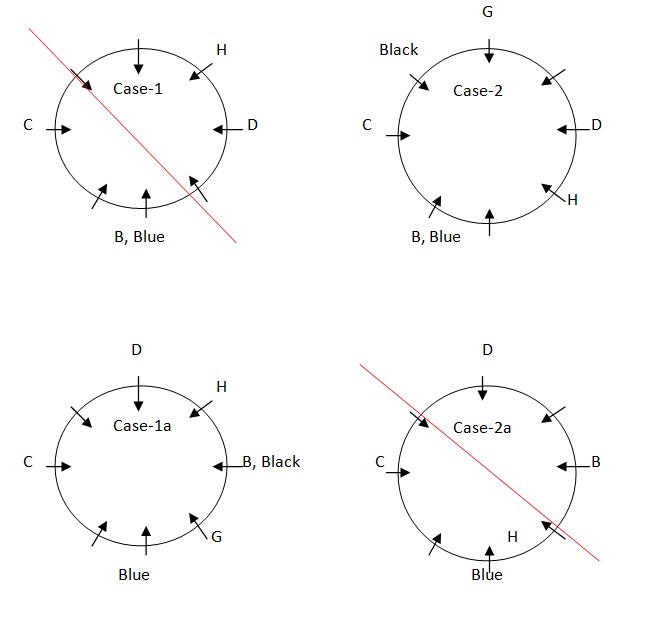 Again we have, The number of persons sit between E and A is the same as the number of persons sit between F and the one who likes Brown, when counted from the right of both A and F F sits opposite to the one who likes Orange. Neither G nor H like Orange. From the above condition and note, case1a gets eliminated because there is no possibility to place F.
Again we have, The number of persons sit between E and A is the same as the number of persons sit between F and the one who likes Brown, when counted from the right of both A and F F sits opposite to the one who likes Orange. Neither G nor H like Orange. From the above condition and note, case1a gets eliminated because there is no possibility to place F. 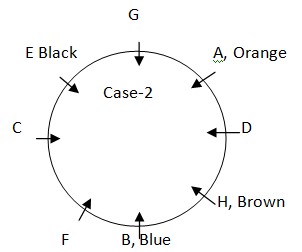 Againwe have, TheonewholikesWhitesitssecondto the right of the one who likes Red. DdoesnotlikeRed. FdoesnotlikeYellowcolour. Fromtheabovecondition,case2showsthefinalarrangement.
Againwe have, TheonewholikesWhitesitssecondto the right of the one who likes Red. DdoesnotlikeRed. FdoesnotlikeYellowcolour. Fromtheabovecondition,case2showsthefinalarrangement. 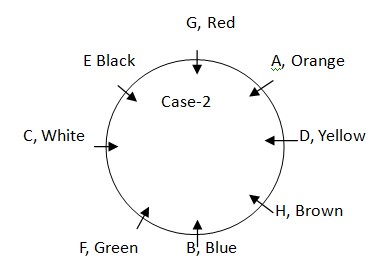
Which authority proposed differential distribution rights for fund managers in GIFT City to boost blended finance?
How many countries are classified as Landlocked Developing Countries (LLDCs) as per the LLDC3 conference in 2025?
Incentives paid by the government to banks for promoting RuPay debit cards and low-value BHIM-UPI transactions will not attract _______.
What percentage growth in remittances was recorded in August 2024 under the Liberalised Remittance Scheme (LRS) compared to July 2024?
What growth rate is required in the remaining months of FY25 to meet the budgeted capital expenditure growth target, according to the EY Economy Watch r...
As per Union Budget 2025-26, how much financial support has been allocated for states under the 50-year interest-free loan scheme for infrastructure dev...
- Which Indian airport became the first to launch hydrogen-powered ground support vehicles?
How many new jobs are projected globally by 2030, as per the WEF Future of Jobs Report 2025?
- Who has been appointed as the new Finance Secretary of India in March 2025?
- Which Indian company recently acquired a 100% stake in Beiersdorf India Pvt Ltd, the maker of NIVEA?
Relevant for Exams:


